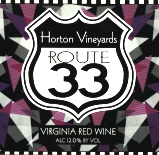 |
|
Wine Details
Price:
$7.00 per bottle
Description:
This wine is made from a smorgasbord of red grapes. Cabernet Franc, Malbec, Touriga Nacional, Tinta Cao, Mourvedre, Syrah, and Grenache. Highly aromatic dry red wine with aromas of cinnamon and spiced cherry. A perfect every day red at the right price.
|
|
|